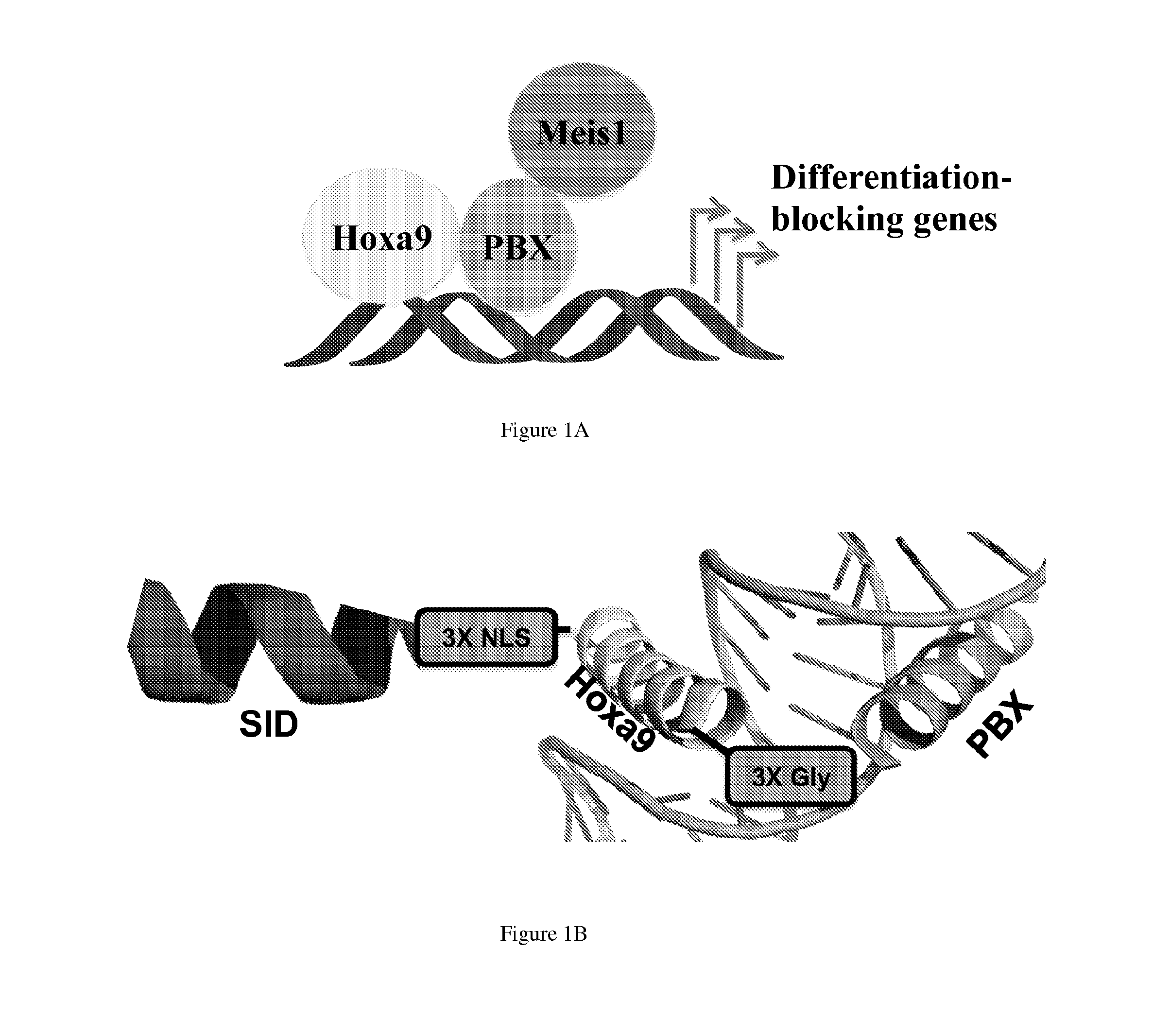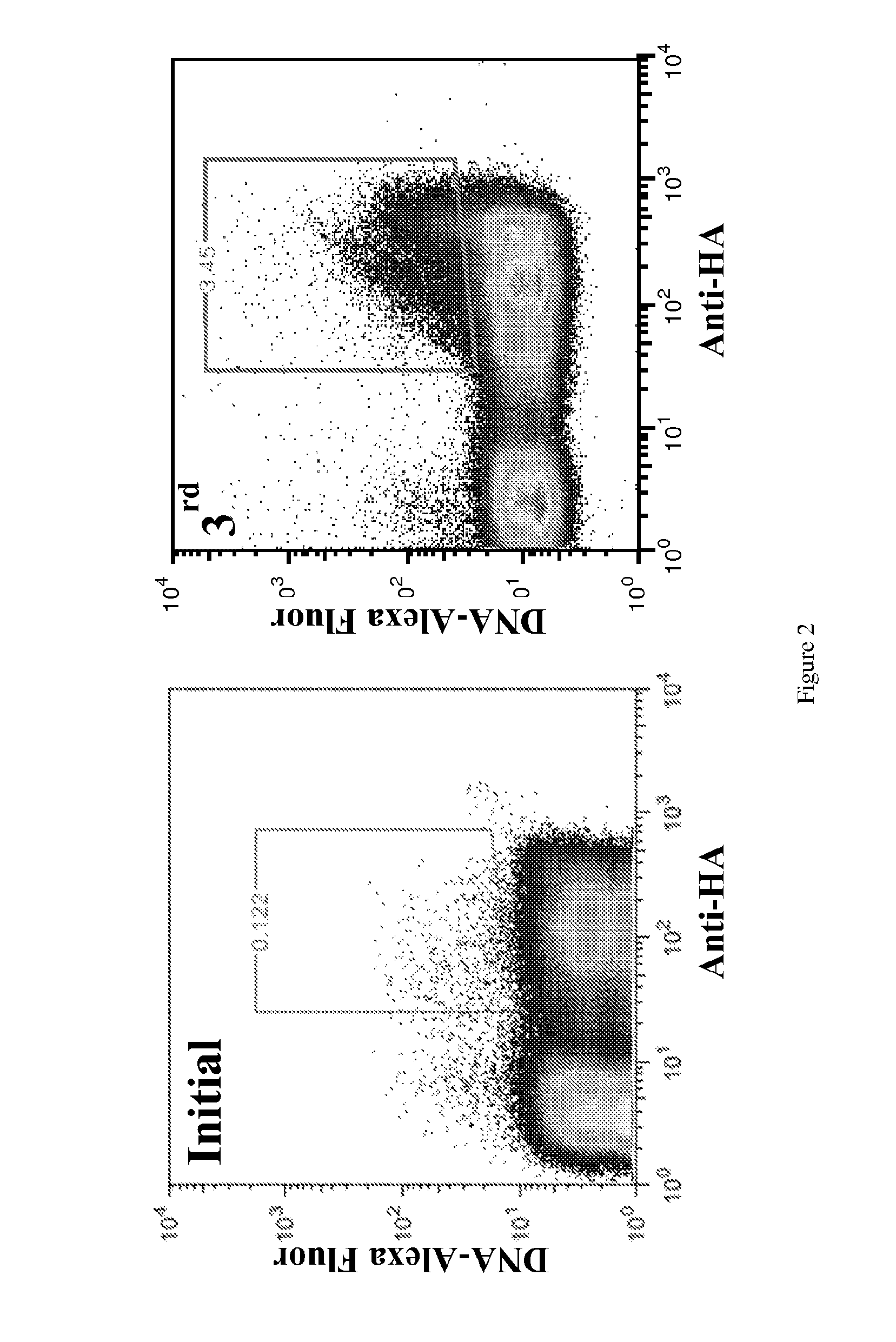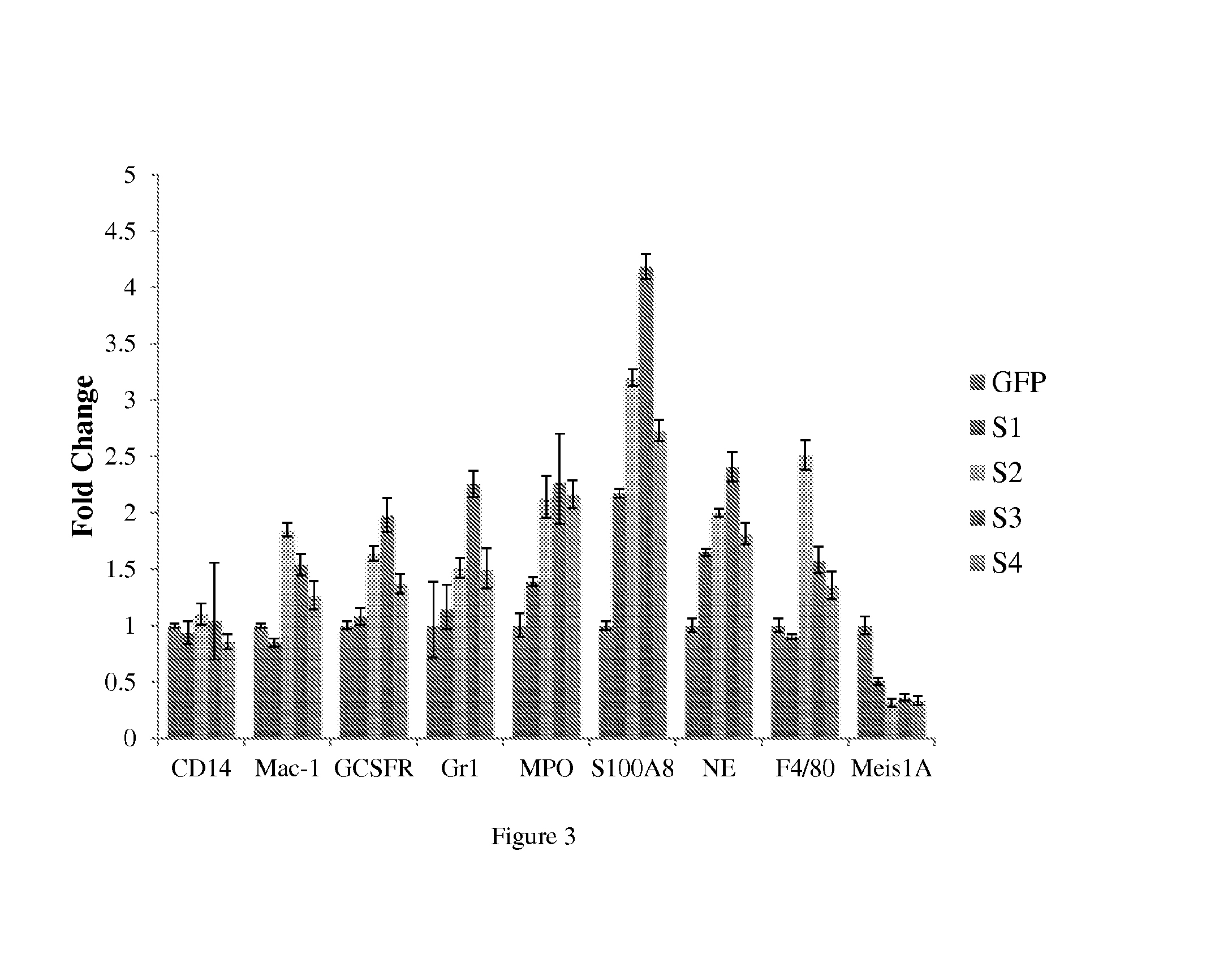Homeodomain fusion proteins and uses thereof
a technology of fusion proteins and homeodomains, applied in the field of homeodomain fusion proteins, can solve the problems of inability to create effective cell-permeable versions of ta-like effector proteins, inability to differentiate between different therapies for the remaining 90% of aml patients, and large size of zinc finger and transcription activator-like effector proteins, etc., to achieve rapid and easy identification of monoclonal fab fragments, reduce the effect of aging and aging, and increase the effect o
- Summary
- Abstract
- Description
- Claims
- Application Information
AI Technical Summary
Benefits of technology
Problems solved by technology
Method used
Image
Examples
example 1
Develop Truncated Homeodomain Fusion Proteins (HFPs) that Bind to a Target DNA Sequence
[0164]Fusion protein constructs were initially screened using a yeast display library. The yeast display library was prepared through homologous recombination in yeast to introduce diversity in the linker and create libraries with linker lengths varying between 1-4 residues between the Hox and PBX helices. We attempted to screen the library using double stranded DNA that is labelled with a fluorophore and contains the Hox / PBX DNA recognition site (5′ to 3′ TGATTTAC or TGATTTAT). The screen may be done in the presence of excess non-specific DNA that is not fluorescently labelled so as to identify clones specific for the target sequence.
[0165]Analysis of the crystal structure of HoxA9-Pbx1-DNA complex revealed the C-terminus of the HoxA9 DNA binding helix is in close proximity to the N-terminus of the Pbx1 DNA binding helix with both helices interacting with the major groove (FIG. 1A).(8) We designe...
example 2
Lysozyme-GFP Cell Based Assay to Monitor Cell Differentiation
[0179]A Lysozyme-GFP cell based assay is useful for investigating the ability of the fusion proteins to induce AML cell differentiation in culture and in vivo. For example, the LFN-fusion proteins can be tested using this type of assay. To develop a cell-based system to accurately model Hoxa9-mediated differentiation arrest in AML, a conditional version of Hoxa9 fused to the hormone binding domain of the estrogen receptor was introduced into bone marrow cells derived from a transgenic mouse in which green fluorescent protein (GFP) was expressed downstream of the endogenous lysozyme promoter. When these cells are cultured in the presence of β-estradiol and stem cell factor (SCF), the cells are arrested in myeloid differentiation and have the ability to proliferate indefinitely. As lysozyme is a secondary granule protein that is only expressed in differentiated myeloid cells, the undifferentiated cells are GFP negative when ...
example 3
Methods to Prepare and Characterize Stapled Fusion Proteins
[0180]For fusion proteins small enough (about 40-45 amino acids) for construction by automated solid-phase peptide synthesis, peptide stapling (by, e.g., ruthenium-catalyzed olefin metathesis of artificial amino acids) may be utilized to construct cell-permeable versions that enable gene modulation in whole cells. Fusion of truncated homeodomain helices of Hoxa9 and Pbx1 is expected to yield miniature proteins (˜40 amino acids) capable of binding to the Hoxa9-Pbx1 DNA consensus sequence. To validate DNA-site selectivity we will isolate and purify the fusion proteins from the yeast cell surface by TEV cleavage (cleavage site upstream of N-terminus) and perform in vitro site-selection PCR experiments (SELEX) using random DNA sequences.(25) Using this method we expect to rapidly identify clones capable of selective binding to the Hoxa9-Pbx1 DNA consensus sequence (TGATTTAC). We will then synthesize cell-permeable α-helix stabil...
PUM
| Property | Measurement | Unit |
|---|---|---|
| molecular weight | aaaaa | aaaaa |
| molecular weight | aaaaa | aaaaa |
| molecular weight | aaaaa | aaaaa |
Abstract
Description
Claims
Application Information
 Login to View More
Login to View More - R&D
- Intellectual Property
- Life Sciences
- Materials
- Tech Scout
- Unparalleled Data Quality
- Higher Quality Content
- 60% Fewer Hallucinations
Browse by: Latest US Patents, China's latest patents, Technical Efficacy Thesaurus, Application Domain, Technology Topic, Popular Technical Reports.
© 2025 PatSnap. All rights reserved.Legal|Privacy policy|Modern Slavery Act Transparency Statement|Sitemap|About US| Contact US: help@patsnap.com



